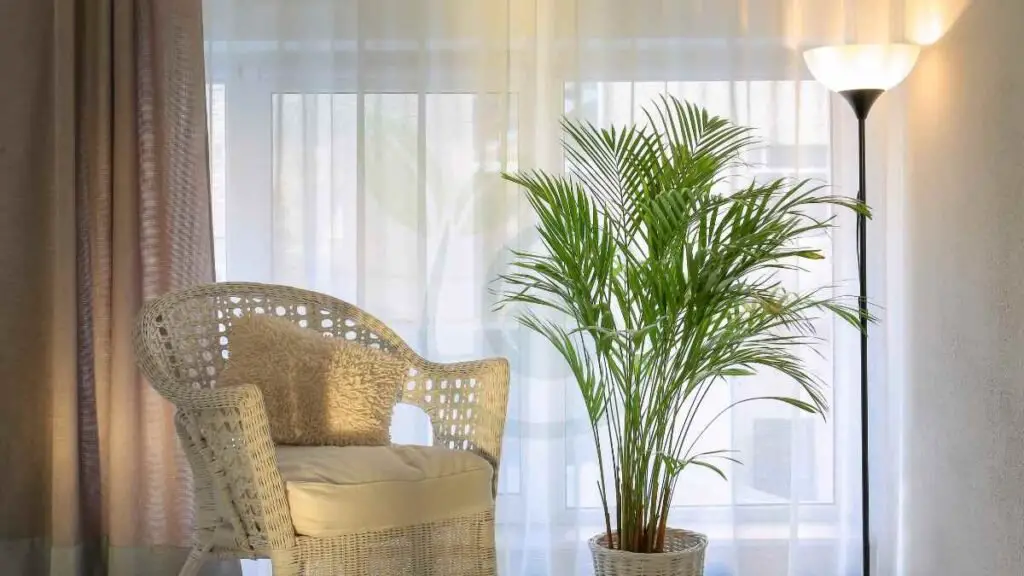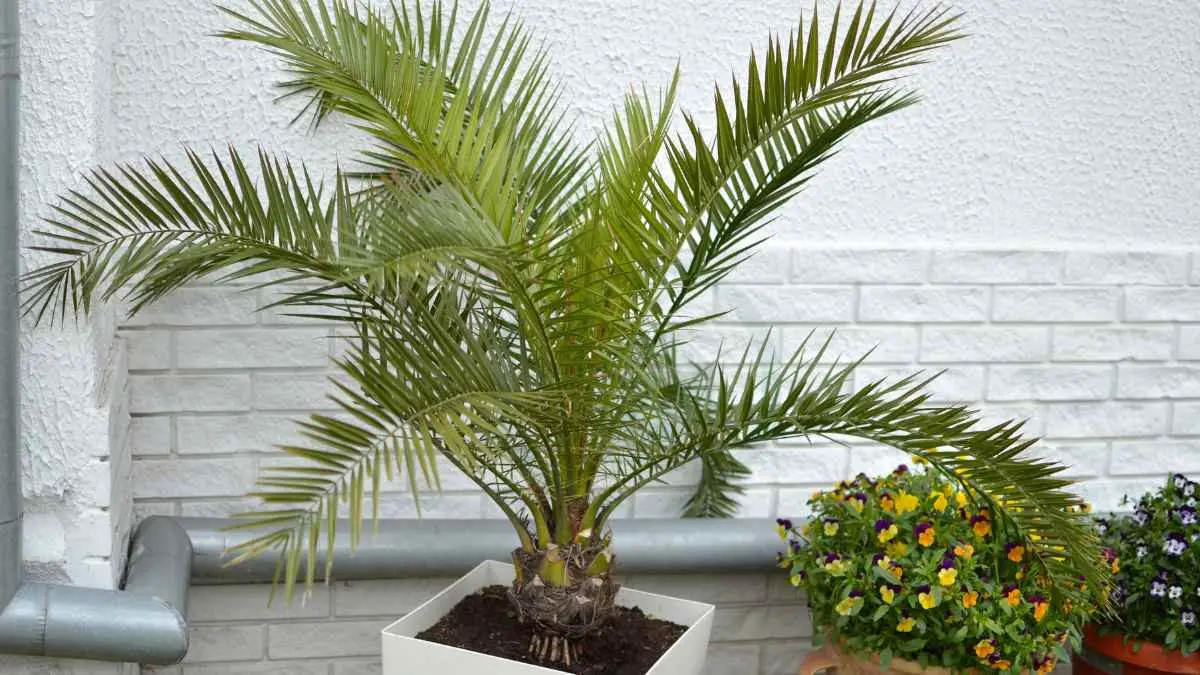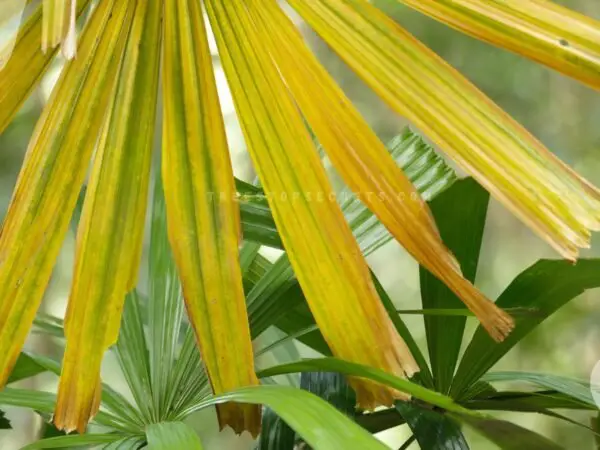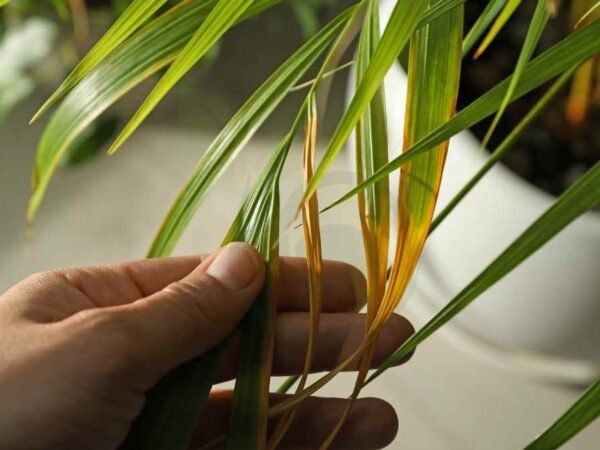Comparing the lush and tropical vibes of the Areca Palm with the regal elegance of the Majesty Palm unveils a striking contrast in their appearance and care requirements. While both palms add a touch of greenery to indoor spaces, they differ in their leaf structure, growth habits, and ideal growing conditions. Understanding these distinctions can help you choose the perfect palm for your home or office setting effortlessly.
Key Takeaways
- Identify Palms Easily: Learn to distinguish between Majesty Palms and Areca Palms based on their unique characteristics.
- Opt for Majesty Palms for Tropical Vibes: Majesty Palms are ideal for creating a tropical ambiance with their lush appearance and graceful fronds.
- Choose Areca Palms for Elegance: Areca Palms bring a touch of elegance with their feathery, arching fronds and slender appearance.
- Consider Size for Space Management: Majesty Palms tend to grow larger, requiring more space, while Areca Palms stay relatively compact.
- Adjust Sunlight Exposure Accordingly: Majesty Palms thrive in bright, indirect light, whereas Areca Palms prefer partial shade to filtered light.
- Tailor Watering to Palm Type: Majesty Palms like consistently moist soil, while Areca Palms prefer a drying-out period between waterings.
Identifying Palms
Majesty Features
Majesty Palms stand out indoors with graceful fronds and a lush appearance, making them popular indoor plants. Originating from Madagascar, these palms thrive in humid, tropical climates. Their natural habitat includes moist forests near streams and rivers.
The Majesty Palm is not just visually appealing; it also offers air-purifying benefits by removing toxins from the air. With proper care, indoor palm plants can grow tall, adding a touch of elegance to any living space.
Areca Features
Areca Palms, also known as Butterfly or Golden Cane Palms, hail from Madagascar and South India. These palms boast golden-yellow stems with feathery green fronds that give off a tropical vibe.
One distinctive feature of Areca Palms is their glossy green stems and trunks that add a touch of sophistication to any room. They are known for their ability to bloom in late spring or early summer, producing small yellow flowers that enhance their beauty.
About Majesty Palms
Areca Palms thrive in hardiness zones 10 to 11, requiring bright, indirect light for optimal growth. On the other hand, Majesty Palms can tolerate slightly lower temperatures, flourishing in zones 9 to 11. They prefer filtered sunlight.
When it comes to watering, Areca Palms prefer consistently moist soil, while Majesty Palms require less frequent watering as they can handle short periods of drought. Overwatering can harm both plants, leading to root rot.
Areca Palms exhibit a clumping growth habit, forming multiple stems from the base. They thrive in well-draining soil with good moisture retention. In contrast, Majesty Palms have a single trunk with graceful arching fronds and prefer rich, well-draining soil.
About Areca Palms
Sun Requirements
Areca palms prefer bright, indirect sunlight, making them ideal for indoor spaces with ample natural light. Majesty palms, on the other hand, thrive in partial sunlight, requiring some shade to prevent leaf scorching. When comparing the sun preferences of Areca and Majesty palms, Areca palms are more adaptable to varying light conditions.
Watering Needs
Areca palms need regular watering to keep the soil consistently moist but not waterlogged. Majesty palms have specific watering needs that involve keeping the soil evenly moist at all times. Comparatively, Areca palms have a more flexible watering schedule than Majesty palms.
Growth Patterns
Areca palms exhibit a clump-forming growth habit where multiple stems emerge from the base, creating a lush and full appearance. In contrast, Majesty palms display an upright growth pattern when young but develop drooping fronds as they mature. When comparing the growth patterns of Areca and Majesty palms, Areca palms have a denser and bushier look due to their clumping nature.
Appearance Comparison

Leaf Structure
Areca Palms have light, feather-like leaves that gracefully arch from the stems, creating a lush and tropical appearance. The leaves are long, narrow, and vibrant green in color, adding a touch of elegance to any space. These palm leaves give a sense of movement and softness to the surroundings.
Majesty Palms, on the other hand, feature broad, fan-shaped leaves that grow in an upward fashion from the center of the plant. The leaves are wider compared to Areca Palms and have a more symmetrical look. The deep green color of Majesty Palm leaves brings a rich and tropical feel to indoor spaces.
When comparing the leaf structures of Areca and Majesty Palms, it's evident that Areca Palms have delicate and wispy foliage, while Majesty Palms boast bold and substantial fronds that make a striking statement in any setting.
Trunk Differences
The trunks of Areca Palms exhibit a smooth texture with a glossy green hue that adds a touch of sophistication to their overall appearance. These trunks are slender yet sturdy, complementing the feathery foliage above. The sleek trunk of Areca Palms enhances their tropical charm.
In contrast, Majesty Palms showcase thicker trunks with rougher textures that add visual interest to their structure. The trunks of Majesty Palms are often brown or grayish in color, providing a stark contrast to the vibrant green leaves above. This robust trunk gives Majesty Palms a more substantial and grounded presence.
When comparing the trunk variations between Areca and Majesty Palms, it's clear that Areca Palms have slender and glossy green trunks, while Majesty Palms feature thicker and textured trunks that contribute to their bold aesthetic.
Size Matters
Height Variations
Areca Palms usually reach a mature height of around 6 to 7 feet, while Majesty Palms can grow taller, reaching heights of up to 10 feet. The potential height differences between these two palms can vary significantly, with Majesty Palms towering over Areca Palms in many cases. The height variations in Areca and Majesty Palms make them suitable for different indoor or outdoor spaces based on their size requirements.
Space Requirements
Areca Palms typically require a moderate amount of space due to their mature width ranging from 3 to 5 feet. On the other hand, Majesty Palms need more room to spread out comfortably, needing space that accommodates their wider span. Comparing the space requirements of Areca and Majesty Palms reveals that while both palms need ample room to thrive, Majesty Palms generally demand a larger area for optimal growth.
Sunlight Preferences
Areca Light Needs
Areca Palms thrive in bright light but can tolerate indirect light. They require full or partial sunlight exposure. Adequate light is crucial for Areca Palms to grow healthily and maintain their vibrant green color. Insufficient light can lead to stunted growth and yellowing leaves, impacting the overall appearance of the plant.
Key Points:
- Areca Palms prefer bright, indirect light.
- Full or partial sunlight exposure is essential for their growth.
- Inadequate light can result in stunted growth and yellow leaves.
Majesty Shade Tolerance
Majesty Palms exhibit a high tolerance for partial sunlight conditions. They can also thrive in shaded areas, making them suitable for indoor spaces with limited natural light. Majesty Palms specifically prefer filtered sunlight and can withstand lower light levels compared to other palm species. Their ability to thrive in shade makes them popular choices for indoor plant enthusiasts.
Key Points:
- Majesty Palms tolerate partial sunlight well.
- They have a preference for shaded environments.
- Compared to other palms, Majesty Palms excel in low-light conditions.
Watering Rituals
Moisture Levels
Areca Palms thrive in moderately moist conditions, requiring regular watering to keep the soil consistently damp but not waterlogged. Majesty Palms, on the other hand, prefer consistently moist soil, necessitating more frequent watering to maintain proper moisture levels. When comparing the two, Areca Palms demand a slightly drier environment compared to Majesty Palms.
Drainage Importance
Well-draining soil is crucial for Areca Palms as they are susceptible to root rot if left in standing water. Adequate drainage ensures excess water flows out efficiently, preventing waterlogging and maintaining optimal growth conditions. Similarly, Majesty Palms also require good drainage to prevent water accumulation around the roots and avoid root rot issues. In essence, both plants benefit from well-draining soil, although Areca Palms are more sensitive to overwatering than Majesty Palms.
Nutritional Needs
Fertilizer Types
Areca Palms thrive with balanced fertilizers containing equal parts of nitrogen, phosphorus, and potassium. For Majesty Palms, slow-release fertilizers with a higher concentration of magnesium are ideal. When comparing, Areca Palms prefer general-purpose fertilizers, while Majesty Palms benefit from magnesium-rich ones.
Feeding Schedule
Areca Palms require feeding every 2-3 months during the growing season for optimal growth. Majesty Palms should be fed every 4-6 weeks in spring and summer to support healthy foliage. In terms of feeding schedules, Areca Palms have longer intervals between feedings compared to Majesty Palms.
Shared Growth Traits
Indoor Adaptability
Areca Palms thrive indoors due to their tolerance for low light levels and ability to adapt to various humidity levels. These palms are excellent choices for indoor spaces, adding a touch of greenery without requiring direct sunlight. Majesty Palms, on the other hand, require bright, indirect light to flourish indoors. Their care includes regular watering to maintain soil moisture levels and occasional misting to keep humidity high.
When comparing the indoor adaptability of Areca and Majesty Palms, Areca Palms stand out for their versatility in different lighting conditions and humidity levels. They can survive in low light environments, making them suitable for various indoor settings. In contrast, Majesty Palms need more specific care requirements, such as adequate sunlight and consistent watering schedules.
Purification Power
Majesty Palms are known for their air-purifying qualities, effectively removing toxins like formaldehyde from indoor air. Their lush foliage not only enhances the aesthetic appeal but also contributes to a healthier indoor environment by filtering out harmful pollutants. Areca Palms also possess air-purifying abilities by absorbing pollutants and releasing oxygen into the surroundings.
Comparing the purification abilities of Areca and Majesty Palms reveals that both plants have beneficial effects on indoor air quality. While Majesty Palms excel at targeting specific toxins like formaldehyde, Areca Palms offer overall purification benefits by removing various pollutants commonly found indoors.
Final Verdict
Choosing Your Palm
When deciding between Areca and Majesty Palms, consider the space available in your home. Assess the sunlight exposure each plant needs. Think about the care routine you can commit to for optimal palm growth.
Areca Palms thrive in bright, indirect light and require watering when the top inch of soil is dry. They can grow up to 6-7 feet tall, making them ideal for spacious rooms with ample natural light.
On the other hand, Majesty Palms prefer partial shade and consistently moist soil. They typically reach heights of 10-12 feet, so ensure you have enough vertical space in your home for their growth.
Consider your lifestyle and maintenance capabilities; Areca Palms are more forgiving if you occasionally forget to water them, while Majesty Palms demand consistent hydration.
To summarize, if you have a smaller living space or need a low-maintenance option, Areca Palms are a suitable choice. For larger areas with a focus on creating a tropical ambiance, Majesty Palms are an excellent selection.
Final Remarks
After comparing the characteristics of Areca Palms and Majesty Palms, you now have a clearer understanding of their differences in appearance, size, sunlight preferences, watering rituals, and nutritional needs. Both palms share some growth traits but vary significantly in various aspects. When deciding which palm to introduce into your space, consider factors like available sunlight, maintenance capabilities, and desired aesthetic.
In conclusion, whether you opt for the lush Majesty Palm or the elegant Areca Palm, remember to cater to their specific requirements for optimal growth. By choosing the palm that aligns with your environment and care abilities, you can enjoy a thriving indoor oasis. Keep exploring plant varieties and cultivation methods to enhance your green thumb skills and create a vibrant indoor jungle.
Frequently Asked Questions
Are Majesty Palms and Areca Palms easy to care for?
Majesty Palms are more challenging to care for compared to Areca Palms. Areca Palms are low-maintenance, making them suitable for beginners or those with busy schedules.
Which palm, Majesty or Areca, is better suited for indoor environments?
Areca Palms are better suited for indoor environments due to their tolerance of lower light conditions. Majesty Palms require bright, indirect sunlight and high humidity levels.
Do Majesty Palms and Areca Palms require frequent watering?
Majesty Palms need consistent watering to maintain soil moisture levels. Areca Palms prefer slightly drier conditions between watering sessions to prevent root rot.
Can Majesty Palms and Areca Palms thrive in similar temperature ranges?
Both Majesty and Areca Palms thrive in warm temperatures ranging from 65-80°F (18-27°C). They should be protected from drafts and cold temperatures below 50°F (10°C).
How do the nutritional needs of Majesty Palms differ from those of Areca Palms?
Majesty Palms benefit from regular fertilization during the growing season with a balanced fertilizer. Areca Palms also require occasional feeding but can tolerate periods without fertilization.
Image Source: Paid image from CANVA





